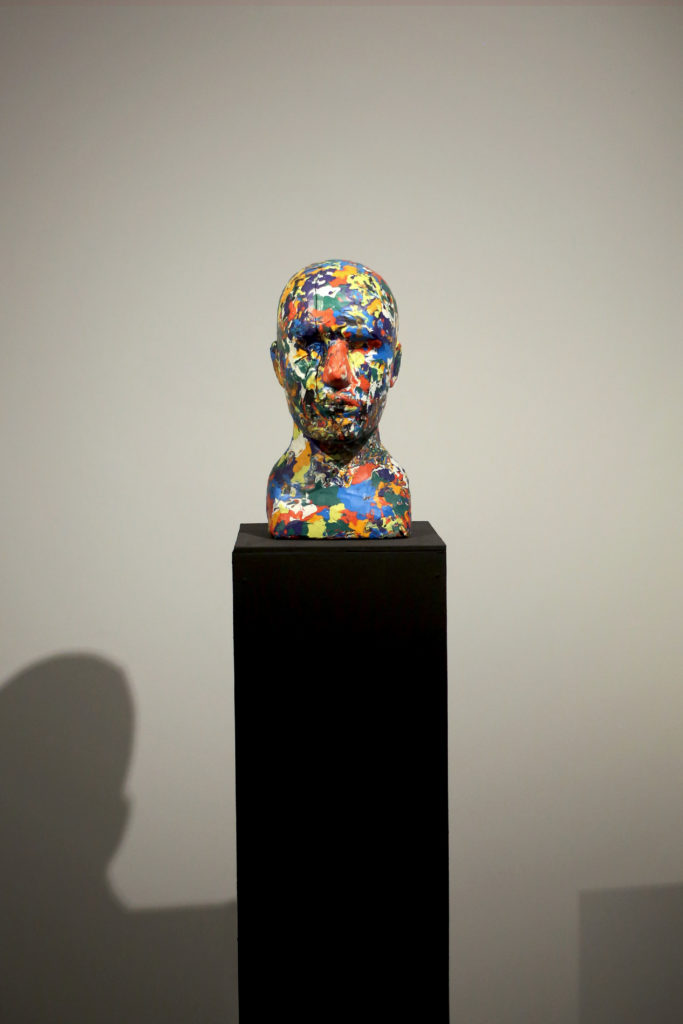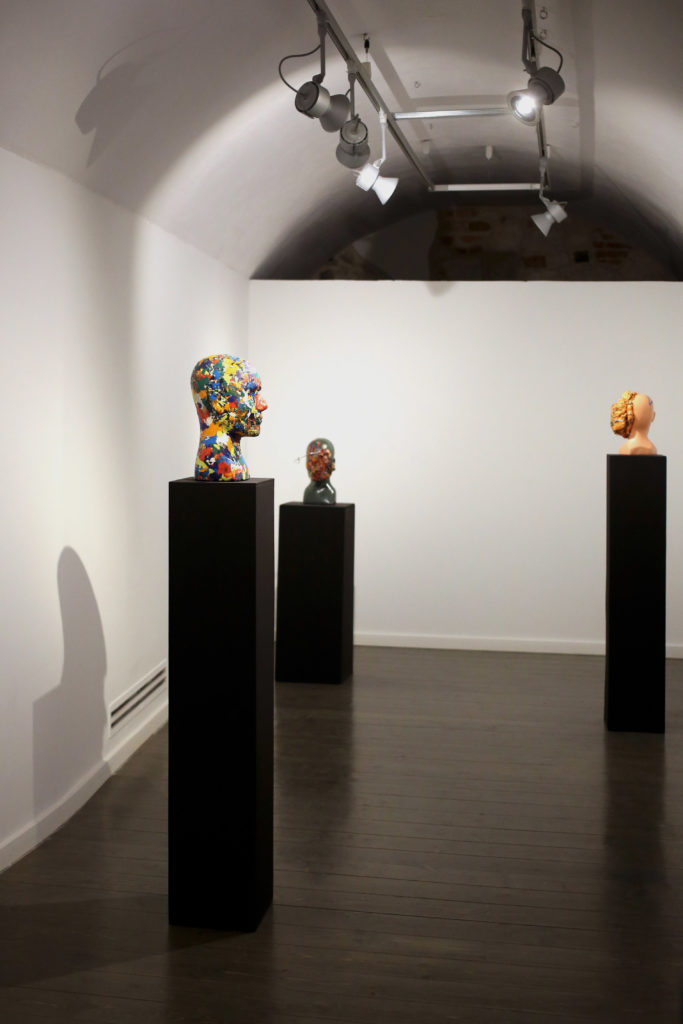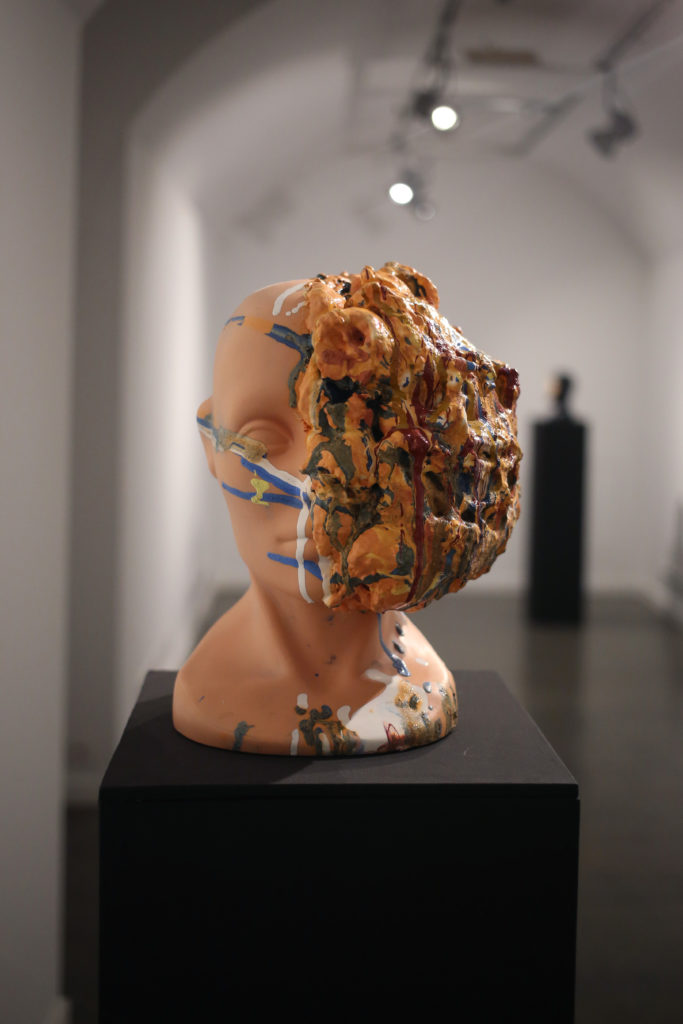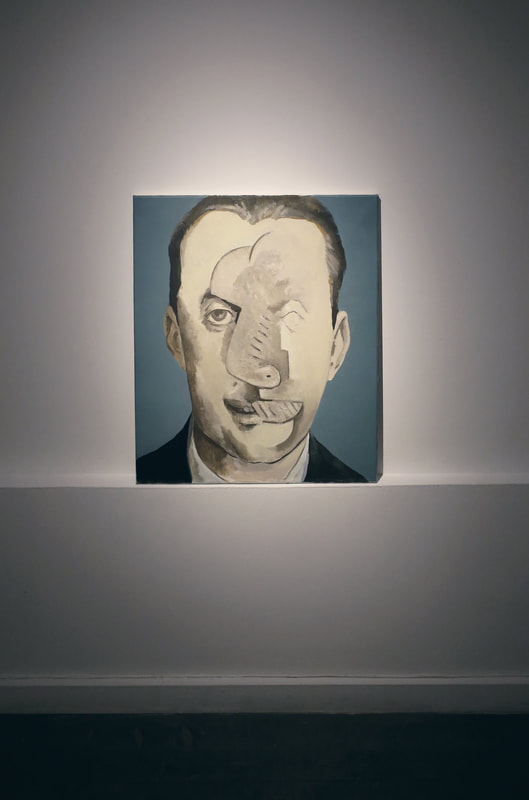THE UNCANNY VALLEY
4 – 17.11.2017 I Gallery Grey House, Cracow
curator: Łukasz Białkowski
Radek Szlęzak’s exhibition could have actually been titled “Guinea Pigs in the Uncanny Valley”. Primarily due to the fact that its main protagonists are allied fighter jet pilots of the Second World War who became founders of a peculiar association. They were victims of plane crashes which massacred their faces. Although all of them underwent plastic surgeries, an imperfect technology of the 1940s caused their deformed countenances to be situated somewhere between entirely human and having an appearance of a Doctor Frankenstein’s creation. Despite the fact, they maintained their sense of humour and established the Guinea Pigs’ or Experimental Rabbits’ Club, to use a Polish equivalent. If the event had taken place 30 years later, they could have called themselves residents of the uncanny valley. The term was coined in the 1970s by an engineer and constructor, Masahiro Mori, who observed that looking at robots (or even their drawings and animations) produced a psychological discomfort in humans, which could be identified as revulsion or even fear.
The phenomenon concerns the slight difference that separates an actual human being from something resembling one. The two concepts would have been mere curiosities if not for one tiny detail: if the Japanese inventor’s theory is true, how does it relate to painting? What light does it shed on the history of the portrait and where should one look for sources of various iconoclasms? In its perspective, the entire history of figurative art took and is taking place in the uncanny valley, and its primary fuel are feelings of anxiety and aversion. Indeed, similar intuitions are by no means rare. A disgust carefully tucked at the back of one’s mind, yet continuously present, has been brought up by Freud and Bataille, among others.
Szlęzak’s works on show at the Szara Kamienica seem therefore to be testing Mori’s assumption: they present a number of different variations on the theme of human images, interrogating reasons for and a scale of deformations they are subjected to by art. They interweave motifs originating in orders generally perceived as distant. Identical impulses, however, might have been driving both the seemingly polite and harmless cubists as well as the Taliban destroying figurative sculptures and revelling in the image of destruction. As it is not unlikely that both cases share the same concern: an erasure of every disturbing similarity between the man and his image, and an escape from the uncanny valley.
Łukasz Białkowski
Translation: Piotr Sylwester Mierzwa












